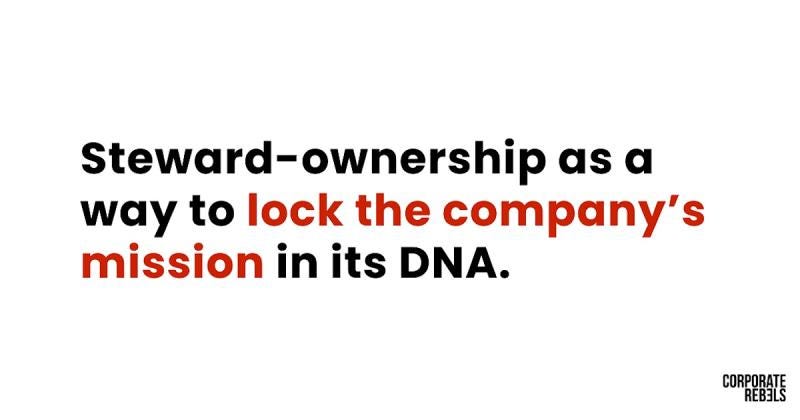An Introduction to Steward-Ownership
A form of self-governance tethered to a purpose
Companies often try to sell their products to their customers by making bold promises. Well-known examples include Disney’s pledge to “creating happiness through magical experiences” and Nike’s commitment to “inspiration and innovation for every athlete in the world.” What if companies were held accountable for these promises, ensuring they prioritize purpose over profit?
This is where steward-ownership comes in. Steward-ownership is a “corporate ownership structure that presents an alternative to shareholder value primacy.” This means that steward-owned companies are legally obligated to prioritize their purpose over the maximizing of potential returns.

How This Is Done
Steward-owned companies prioritize two principles: self-determination and purpose orientation. Self-determination refers to the power structure of companies, where the employees (or stewards) who directly assist in operating the company function as the decision-makers. Purpose orientation refers to prioritizing the purpose through reinvesting profits or directing them toward the “purpose.” In steward-ownership models, these principles are legally bound to protect them from being infringed upon.
Steward ownership can be implemented through several different models:
Double Foundation Model
Legally separates money and power. The managers act as the stewards for the company while another charitable organization holds economic rights and shares of the company
Single Foundation Model
All voting and economic rights are held by a “self-governing non-profit foundation.”
Veto Share Model (or Golden Share Model)
Guiding principles are included in the company’s “articles of association.” Stewards hold 99% of control rights but no economic rights, while the 1% is given to an independent non-profit. This places a check on the company to ensure all principles in the articles are being followed
Perpetual Purpose Trust
Set up for the benefit of a purpose rather than a person. Steward owners are in control but cannot extract value from the company.
Employee Ownership Trust
Shares of a company are held by a trust that ensures the employees control or benefit from the company.
Examples of Steward-Owned Companies
A trust controls the company’s values, and the non-profit uses the profits from the company to fulfill the values in the trust
For Patagonia, this means they are legally obligated, through their trust, to fulfill their mission to “save the planet”
92% of the company is owned by the Robert Bosch Foundation, which continually reinvests profits into charity
93% of the shares with voting rights are held by 10 steward owners that cannot be sold
Their mission is to solve the plastic crisis
They gather “wild” plastic waste to produce recycled trash and parcel bags
1% of Wildplastic’s voting shares is held by Purpose Foundation to protect the ownership and financial structure, while the rest of the shares are divided between investors (with no voting rights) and stewards (with all the voting rights)
Overall, steward-ownership is a promising approach to keep companies accountable for the promises they make to the public. Additionally, it often gives the individuals that carry out the mission ownership to continue fulfilling it in the long term. By shifting power away from profit-maximizing shareholders and toward stewards who prioritize purpose, companies can ensure that their commitments—whether to sustainability, social responsibility, or ethical business practices—are not just marketing tools but legally embedded principles.



